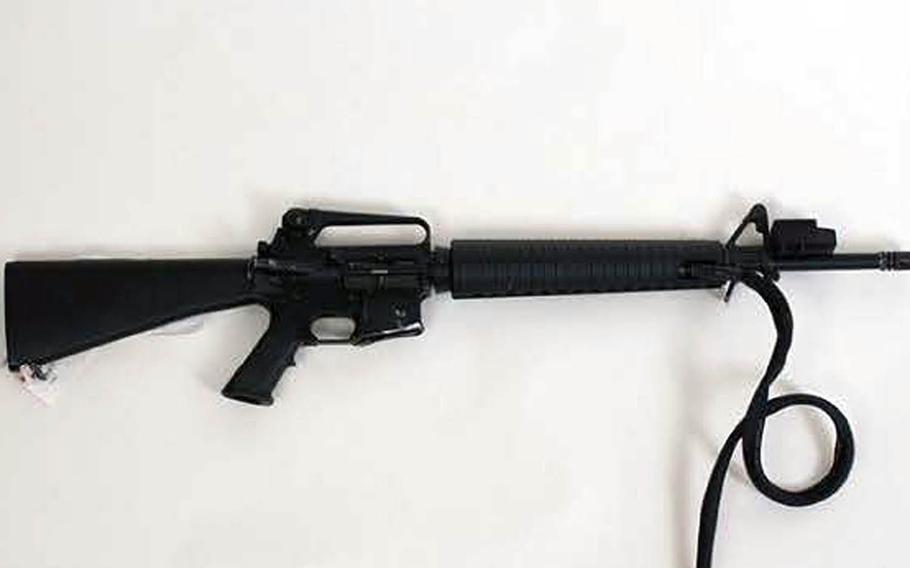
During a sting operation earlier this year, the Government Accountability Office was able to obtain restricted military items, such as this simulated M-16A2 rifle, from the Defense Department using using a fictitious federal agency. Such items can be modified to actually function. (Courtesy of GAO)
A federal sting operation uncovered lax oversight by the Defense Department agency tasked with transferring military surplus to law enforcement agencies, potentially allowing illicit purchases of “controlled properties” such as night-vision goggles and simulated pipe bombs.
Government Accountability Office investigators set up a fictitious agency with the intent of submitting requests for potentially lethal items sold under the Law Enforcement Support Office program, also known as the 1033 program. It is administered by the Defense Logistics Agency, which is already taking steps to tighten security around the transfers.
“In less than a week after submitting the requests, our fictitious agency was approved for the transfer of over 100 controlled property items with a total estimated value of about $1.2 million,” the GAO said in a report released Tuesday.
Controlled items are “sensitive in nature,” the GAO said, that are not allowed to be released to the general public. Among these items are night-vision goggles, thermal-imaging equipment, specialized printers, explosive ordnance detonation robots, certain small arms, Mine Resistant Ambush Protected vehicles and aircraft.
Items requested ranged in price from $277 to more than $600,000.
The LESO program also transfers non-controlled items, such as medical supplies, furniture and tents.
The GAO’s bogus agency, which had its own sham website, was earlier this year able to obtain, among other things, simulated pipe bombs and simulated rifles used by the military for training. With alterations, those items could be made to function, the GAO said.
A GAO investigator, using LESO-approved documentation and fake identification and law enforcement credentials, passed security checks and was allowed to enter warehouse sites.
“Personnel at two of the three sites did not request or check for valid identification of our investigator picking up the property,” the GAO said.
In one case, the fake agency received more items than actually requested. In a request for 48 infrared illuminators, which are usually used on weapons to illuminate or pinpoint a target in the dark, the GAO was given 51 illuminators in pouches — although one pouch turned out to be empty.
Congress authorized the transfer of certain military equipment and parts to law enforcement agencies in 1989. The guidelines governing such transfers have morphed since then.
In the late 1990s, there was a surge of transfers to counterdrug police teams, stemming from the Violent Crime Control and Law Enforcement Act of 1994.
Public backlash at the sight of police using military armored vehicles to confront protesters in 2014 during standoffs in Ferguson, Mo., led President Barack Obama to curtail the transfer of items such as helicopters and grenade launchers.
Republicans have introduced legislation in the House to overturn those Obama-era restrictions, and the Trump White House has expressed a desire for more, not fewer, of such transfers.
As of August 2016, more than 8,600 federal, state and local law enforcement agencies were participating in the LESO program, but most transfers were to the latter two, the GAO said.
In the years 2013 through 2015, about two-thirds of DOD-controlled property items were transferred to state and local agencies, the GAO said.
Transfers of controlled property during that three-year period totaled about $1.07 billion for 388,570 items. The dollar amount is based on what the Defense Department initially paid for the items, not their actual value today.
The Pentagon agreed with the GAO’s recommendations that the Defense Logistics Agency strengthen internal controls over transfers and conduct a fraud-risk assessment.
The DLA has already revised its procedures for verifying and approving applications by federal agencies, the GAO said. The fraud assessment and a mitigation strategy will be completed by April 2018.
olson.wyatt@stripes.com Twitter: @WyattWOlson